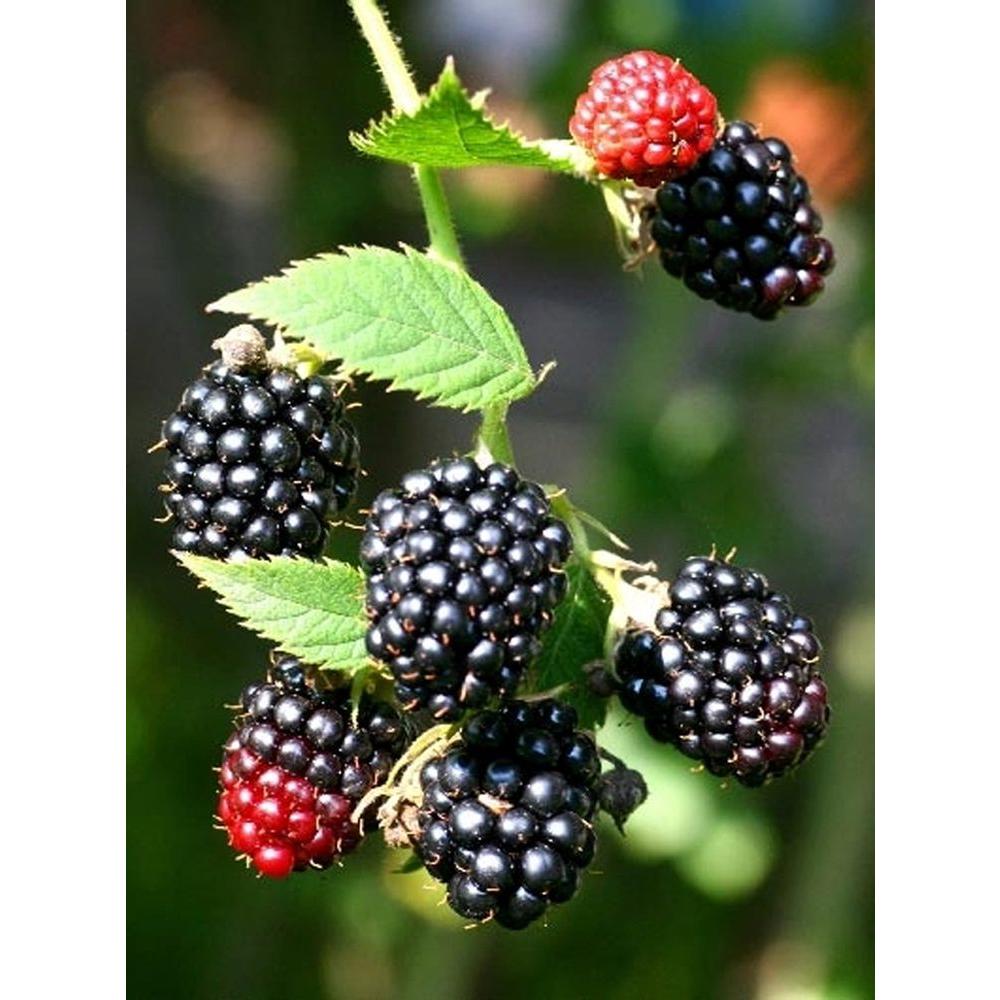
The genetic mechanisms and environmental cues that induce these disorders are not well understood. (2019) reported that high N rates increased red drupelet reversion in ‘Ouachita’ erect blackberrygrown under a high tunnel. No similar research has been done on the response of WDD in blackberry to fertilizer applications, although Edgley et al. (2007), working with ‘Heritage’ primocane-fruiting red raspberry ( Rubus idaeus), stated N application through fertigation at 100 kg⋅ha –1 reduced the percentage of white drupelets. Alleyne and Clark (1997) found that N applications increased fruit N and juice pH, but no other measures of fruit quality were impacted. Fruit has been demonstrated to be the strongest sink for recently acquired N ( Malik et al., 1991). Typical recommended application rates of N for blackberry are 40 to 80 lb/acre in mature plantings, and spring is the key time to apply for best results in fruit production and quality ( Strik, 2008 Strik and Bryla, 2015). Nitrogen is an essential element for plants, but blackberry has a relatively low requirement compared with other fruit crops. A 30% shadecloth treatment had a significantly positive impact by decreasing WDD symptoms in three cultivars by 63% when compared with unshaded plants ( Stafne et al., 2017), a result that was consistent with that in a report by Takeda et al.

The sugar content of extracted white drupelets was substantially less than normal drupelets. (2017) found that fruit harvested early in the season had the most WDD berries, but an increase in WDD was seen in the last harvest for all three cultivars (Chickasaw, Kiowa, and Sweetie Pie). Thus, most of what is communicated about this disorder is observational conjecture. Possible causes of WDD have been postulated, such as low humidity, wind, rainfall, high light intensities, ultraviolet light, stinkbugs (Pentatomidae), redberry mite ( Acalitus essigi), and various interactions of some or all these factors ( Bolda, 2009 Clark, 2008, 2013 Fernandez, 2012) however, few studies have attempted to verify causes under experimental conditions. White drupelet disorder on ‘Sweetie Pie’ blackberry can manifest on nonadjacent drupelets, sometimes on opposite sides of the berry, as seen in the image.Ĭitation: HortTechnology 31, 6 10.21273/HORTTECH04931-21 Although it is likely that multiple factors are involved in the development of white drupelets, additional N may reduce the problem. Leaf chlorophyll index and photosynthesis measurements were unaffected by treatment. Occurrence of white drupelets by treatments 0×, 1×, and 5× correlated significantly with the cumulative number of rainfall events ( r = 0.49, 0.47, and 0.46, respectively). WDD for the 0× treatment correlated negatively to maximum high daytime temperatures during May ( r = –0.58, P = 0.03) over the three seasons. Nitrogen application decreased the percentage of white drupelet berries from 13.0% (control) to 10.0% (one additional application) and 9.1% (five additional applications). The two values were divided to create a proportion and were then multiplied by 100 to determine the percentage. Berries were harvested and weighed as a total, then berries with white drupelets were separated out and weighed. One control treatment of no additional N (0×) was also included. Two additional N application treatments of 100 kg⋅ha –1 were applied at one time (1×) or five, 20-kg⋅ha –1 applications (5×), spaced 1 week apart for 5 weeks starting at bloom. An initial 50 lb/acre (56.0 kg⋅ha –1) N was applied to all plots at budbreak.


In this study, three treatments were applied to examine whether the addition of nitrogen (N) can reduce WDD on ‘Sweetie Pie’ erect blackberry over three seasons. Other factors, such as overall plant stress, may be contributing influences. Although high temperatures and light intensities have been implicated, little is known why this disorder manifests. White drupelet disorder (WDD) in blackberry ( Rubus subgenus Rubus) is an abiotic condition resulting from a cultivar and environment interaction.


 0 kommentar(er)
0 kommentar(er)
